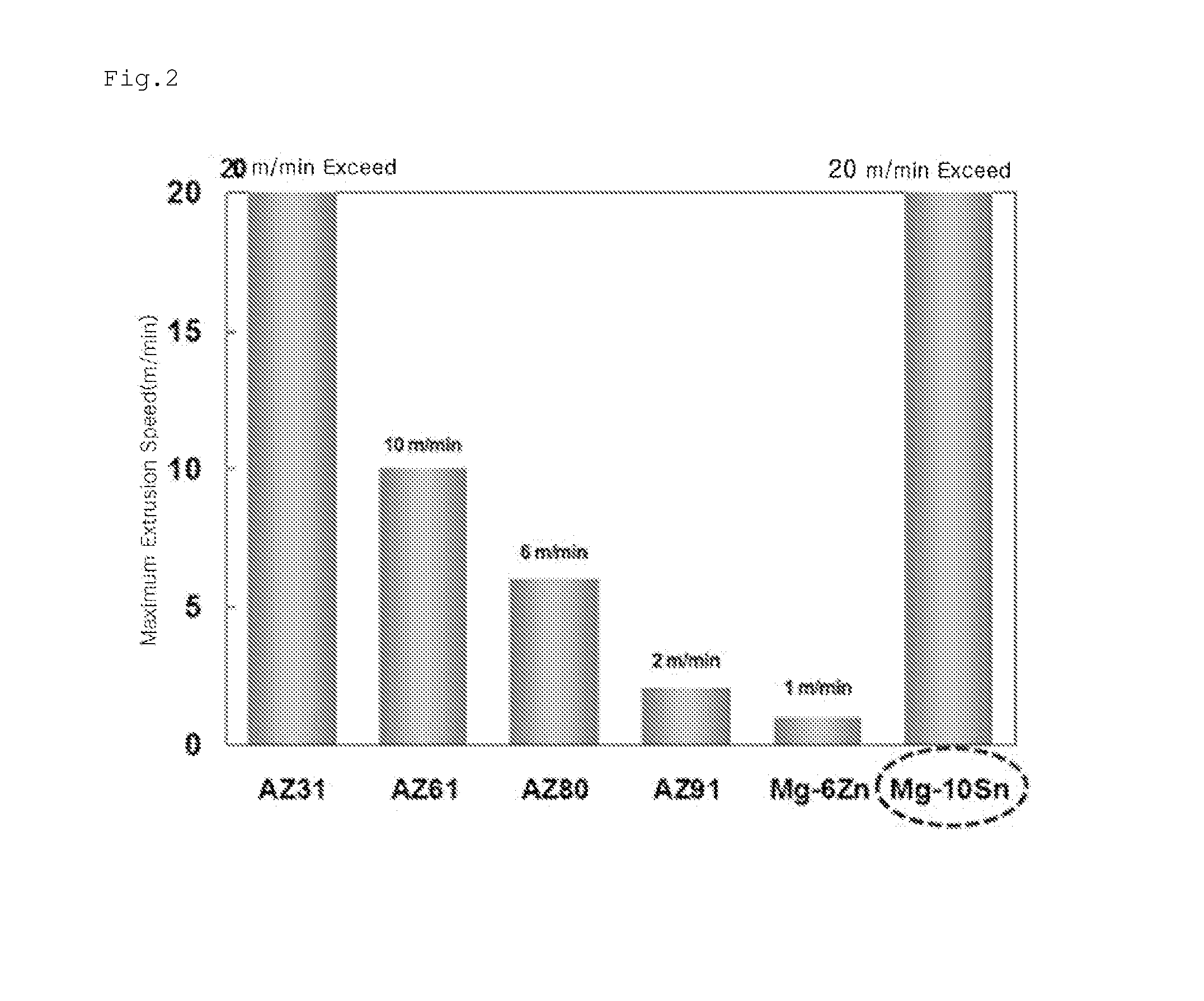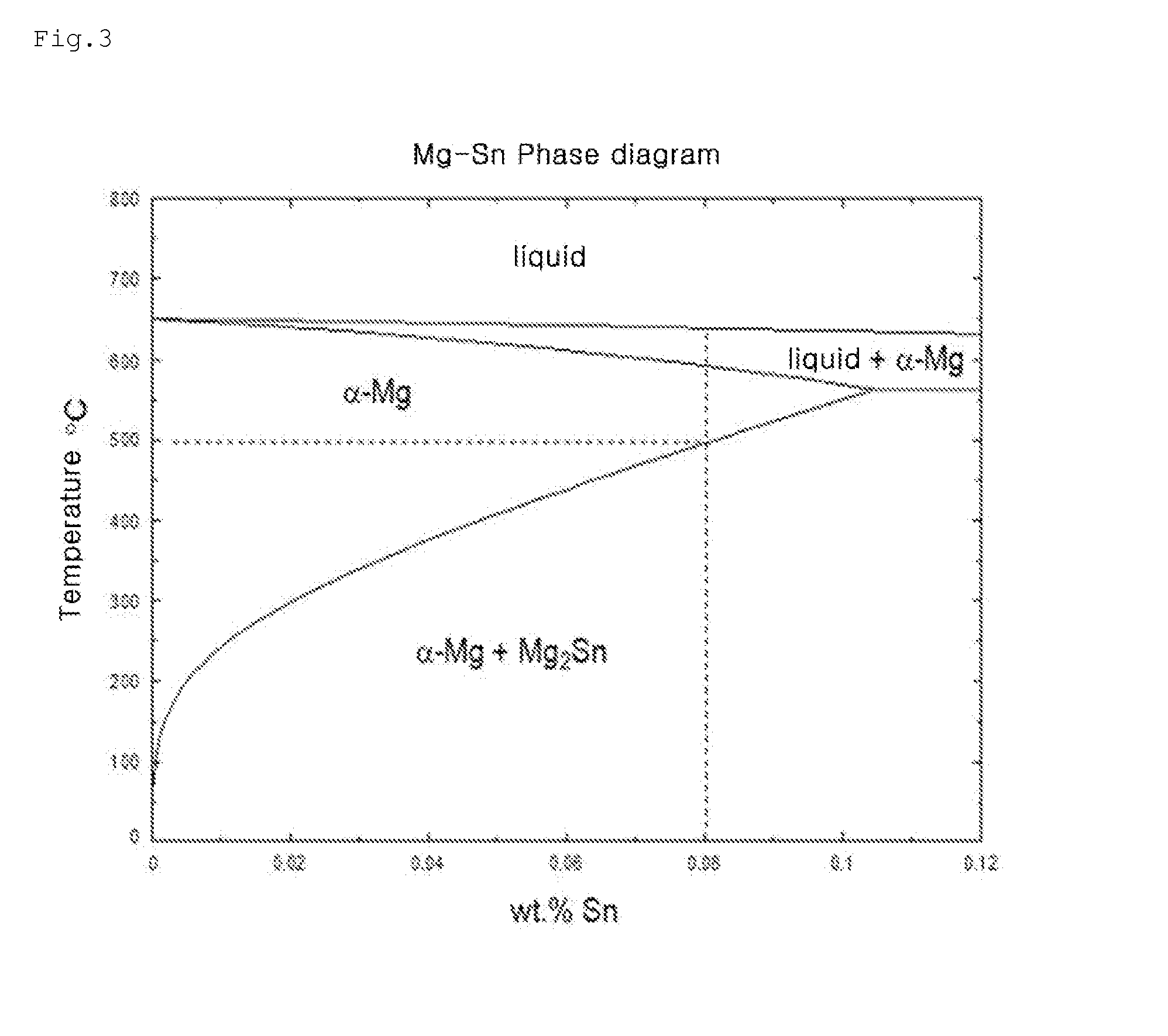Machining magnesium alloy capable of being heat treated at high temperature
- Summary
- Abstract
- Description
- Claims
- Application Information
AI Technical Summary
Benefits of technology
Problems solved by technology
Method used
Image
Examples
Embodiment Construction
is an alloy in which the content of Y was reduced, by weight, to 0.3% from 1% of example 5. The ignition temperature of example 6 was 560° C. that is lower by only 13 degrees than that of example 5 even though the content of Y was decreased considerably, so that it is expected that the content of Y that is a costly element can be reduced.
[0072]Variations in ignition temperatures of materials, in which a rare earth metal element, rather than Y, was added in combination with Ca, were measured. As can be seen from examples 3 and 4, ignition temperatures of Sm and Gd among rare earth elements were 427° C. and 399° C., respectively, so that the effect of adding Sm and Gd was not significant compared to the effect of adding Y. Similarly, as compared between comparative example 6 and comparative examples 7 and 8, the ignition temperatures of the materials, in which Sm or Gd was added, decreased compared to comparative example 6 in which Ca was added alone. Thus, it is determined that Sm an...
PUM
| Property | Measurement | Unit |
|---|---|---|
| Temperature | aaaaa | aaaaa |
| Fraction | aaaaa | aaaaa |
| Fraction | aaaaa | aaaaa |
Abstract
Description
Claims
Application Information
 Login to View More
Login to View More - R&D
- Intellectual Property
- Life Sciences
- Materials
- Tech Scout
- Unparalleled Data Quality
- Higher Quality Content
- 60% Fewer Hallucinations
Browse by: Latest US Patents, China's latest patents, Technical Efficacy Thesaurus, Application Domain, Technology Topic, Popular Technical Reports.
© 2025 PatSnap. All rights reserved.Legal|Privacy policy|Modern Slavery Act Transparency Statement|Sitemap|About US| Contact US: help@patsnap.com



